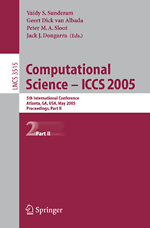Access our database of in-depth knowledge to learn about high-performance computing from experts in the field.
Tutorials about Writing Parallel Code
After you have your cluster up and running, you can
use these links to information about what you need to know about parallel computing, porting existing parallel code, or writing new parallel code
so you can run your own parallel code.
Resources Assisting with Using Parallel Code:
Cluster Software Development Kit - download make files, project files, and code examples for a variety of different
compiler and language combinations. Learn by example, pick apart these files for your use, or substitute in your own code.
Message-Passing Interfaces (MPIs) - find out about the message-passing libraries available for your parallel computing projects
Compiling the MPIs - read instructions describing how to compile your code with the message-passing libraries
Parallel Applications - try out others' parallel codes
Visualization - take advantage of the communications visualization window present in MacMPI_X
Publications by Dauger Research:
 "Plug-and-Play" Cluster Computing
"Plug-and-Play" Cluster Computing
High-Performance Computing for the Mainstream - "a must-read"
This article was published in the special Cluster Computing issue (Mar/Apr 2005) of
Computing in Science and Engineering (CiSE),
a joint publication of
American Institute of Physics (AIP) and Institute of Electrical and Electronics Engineers (IEEE).
Dean Dauger and Viktor Decyk
describe the technology design of Mac clusters,
addressing why it was necessary to "reinvent" the cluster computer
and how it is meant to benefit users of parallel computing.
 "Plug-and-Play" Cluster Computing - HPC Designed for the Mainstream Scientist "Plug-and-Play" Cluster Computing - HPC Designed for the Mainstream Scientist
Computational Science - ICCS 2005
LNCS 3515, p. 84 ff.
5th International Conference, Atlanta, GA, USA, May 22-25, 2005. Proceedings, Part I
Springer-Verlag Berlin Heidelberg 2005
Dauger Research presented this paper at the International
Conference on Computational Science at Emory University
in Alanta, Georgia, USA, on May 23, 2005.
Dr. Dean Dauger and Dr. Viktor Decyk
describe how the the technological design of Mac clusters
maximizes the benefits of parallel computing for users.
 "Plug-and-Play" Cluster Computing using Mac OS X "Plug-and-Play" Cluster Computing using Mac OS X
In this paper, accepted at the IEEE Cluster Computing 2003 conference,
Dr. Dean Dauger and Dr. Viktor Decyk
describe how the Mac clusters' ease-of-use
maximizes the benefits of parallel computing for users.
AppleSeed: A Parallel Macintosh Cluster for Scientific Computing
in J. Plasma Fusion Res., Vol. 79, No. 8 (2003), 772-779
by
Viktor K. Decyk and Dean E. Dauger
 Numerically-Intensive "Plug-and-Play" Parallel Computing Numerically-Intensive "Plug-and-Play" Parallel Computing
At the IEEE Cluster Computing 2001 coference, Dr. Dean Dauger and Dr. Viktor Decyk
presented
this paper
describing much of their experience, success, and vision of this form of parallel computing.
Plasma Physics Calculations on a Parallel Macintosh Cluster
in Physical Scripta, Vol. T84, 85-88, 2000
by
Viktor K. Decyk, Dean E. Dauger, and Pieter R. Kokelaar
|


